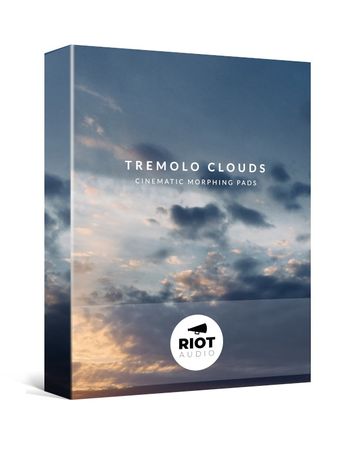Tremolo Clouds KONTAKT [FREE]
FREE | 07 March 2021 | 37 MB
Free cinematic morphing pad instrument based on our proprietary CLOUDS engine.
This library is based on a combination of violin and acoustic guitar tremolos. Our CLOUDS engine turns these into beautifully morphing, granular-style pads.
The difference between this pad engine and a standard granular synthesis engine is that the grains here are created by hand, by using a very fast playing style to create an almost continuous sound.
INTRODUCTION
TREMOLO CLOUDS is a free morphing pad instrument based on tremolo violin and acoustic guitar.
LAYERS
Our acclaimed CLOUDS engine generates organic movement between different sample sources and groups. It contains two layers, A and B, each of which in turn contains a base sublayer and a target sublayer, i.e. four layers in total.
• MORPHING: This section controls the morphing parameters of the engine. The engine is configured to modulate from the base sublayers of layer A and layer B to their target sublayers over time.
• Amount: This controls how much the base layers morph into the target layers. This can be controlled for A and B separately.
• Speed: Controls the speed of the morphing from the base layers to the target layers. Low settings equal speeds of ~300ms, while higher settings result in a morphing speed of around 9 seconds.
• OCTAVES: Each layer (A, B) contains three octaves, each within their own Kontakt group and with subtle individual differences, such as different recording takes, pitch shift variations etc. This section allows for volume control of each of the octave groups. Choose one group only for a simple, thin sound, or dial them all in for a full, organ-like multi-octave spread.
• X-FADE: This fader allows you to transition between the main layers A and B. We recommend automating this or controlling it via MIDI CC (modwheel etc) as this gives you maximum expressivity during playing.

FX
The effects section contains controls for Distortion, BP (Bandpass) Filter, Delay and Reverb.
• Distortion toggle button: Turns Tape distortion/saturation on and off.
• Distortion: Regulates the amount of saturation/distortion. At the higher end of the control you will hear tape compression kicking in – this stops the levels going all out of proportion.
• BP Filter Freq(uency): Controls the centre of the Bandpass filter. We’ve opted for a fairly wide BP filter with smooth curves for a natural, warm sound. Nevertheless, you can use it to sweep through the frequency spectrum up to a very narrow high band.
• Delay: Controls the amount of delay return.
• Time: Controls the time of the delay intervals. The delay is tempo-synced, with 8ths/quavers as the base unit. The possible range is from 1 8th to 12 8ths.
• Reverb: Controls the amount of reverb return. The reverb is a modelled Lexicon 480 digital reverb unit with a long hall setting (9.0s).
• Length: Controls the size of the reverb – both early reflections (ER) and late reflections (LR) are adjusted with this control.
EQ
Low, Mid and High
Controls gain of low, mid and high bands of a parametric EQ. The EQs have wide Qs for a musical, soft attenuation or enhancement effect.
Note: Requires Full Version of Native Instruments Kontakt 6.4.2+ (Kontakt Player not supported)
